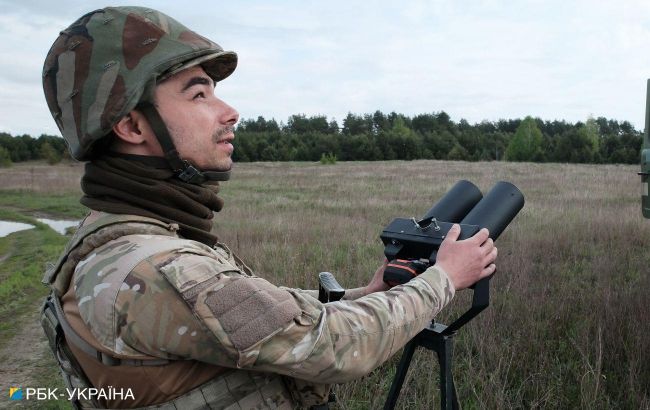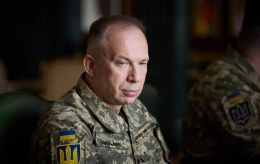Was June 30 attack on Kyiv unusual? Expert analysis on Russian tactics and plans
 Photo: The June 30 rocket attack on Kyiv could have been a reconnaissance (Vitalii Nosach, RBC-Ukraine)
Photo: The June 30 rocket attack on Kyiv could have been a reconnaissance (Vitalii Nosach, RBC-Ukraine)
On the evening of June 30, an air raid alert sounded in Kyiv and some northern regions over a missile threat. Later, it turned out that the Russian military had fired two Iskander-K missiles at the capital. They were shot down, but the falling debris caused damage and injuries both in the city and in the region.
Read more about yesterday's attack on Kyiv and the Russian goal in the RBC-Ukraine report below.
Contents
Attack on Kyiv and its aftermath
The Ukrainian Air Force informed about the cruise missile coming from the north at 7:19 p.m. A little later, at 7:25, it was reported that the missiles were flying southwest of Chernihiv and were headed for Kyiv. At 7:28, the missiles were heading through Brovary toward the capital. At 7:30, residents of Vyshhorod were also urged to take cover. A couple of minutes later, explosions were heard in Kyiv, and Mayor Vitali Klitschko announced that air defense was operating in the Kyiv region. After that, it became known that the debris had fallen on a 14-story residential building in the Oblonskyi district of the capital. There was a partial destruction of balconies on two floors and a fire, which was extinguished promptly. In total, there were six victims in the building - 4 women, an 11-year-old girl and a man. One elderly woman was hospitalized. The others were treated on the spot. All the victims had a sharp stress reaction.
In the morning, the consequences of the evening attack on the Kyiv region were detailed. According to Ruslan Kravchenko, the head of the Regional Military Administration, a total of 3 people were injured, one of them was a child. All of them are currently in one of the regional hospitals.
Three private houses were damaged in one of the districts in the region. Windows and doors were smashed and walls were cut. A warehouse, several administrative buildings, and 16 vehicles - cars and a motorcycle - were also damaged. According to the State Emergency Service, the blast wave in the Kyiv region damaged the building of a fire and rescue unit. There was glass, partially broken windows, and a damaged ceiling. The rescuers were in a shelter at the time of the attack, so no one was injured.
What means Russians used
According to Illia Yevlash, a spokesman for the Ukrainian Air Force, the enemy launched two Iskander-K cruise missiles at Kyiv last night. They were shot down. He added that unfortunately, the falling debris damaged the infrastructure. According to Yevlash, no important changes were detected in this attack.
"However, we can say that the enemy usually attacks at night quite seriously with their missiles. This time, they decided to strike in the evening at half past eight on Sunday, a warm summer day when there were many people. This is how they show their cynical face every time. Russia is a terrorist country and continues to prove it with every such attack," says Yevlash.
Meanwhile, the Kyiv City Military Administration notes that yesterday's missile strike on Kyiv is still different from numerous recent enemy air attacks on the Ukrainian capital.
"The enemy did not strike in the dark, nor with combined or massive fire. Not with ballistic weapons or cruise missiles from strategic bombers. The aggressor is trying new tactics - he is looking for the right time, methods, and means to hit Kyiv. Because the capital of Ukraine has always been and will be one of the highest priority targets for the invaders," the KCMA said.
Was this attack unusual? Expert opinion
In a comment to RBC-Ukraine, Oleksandr Kovalenko, a military and political observer of the Information Resistance Group, notes that similar attacks with a small amount of ammunition have been carried out before. Particularly, when one or two missiles or drones were launched in the direction of Kyiv in small numbers.
"I believe this is reconnaissance by combat. They were exploring what types of air defense systems were near Kyiv and tried to locate them and adjust their further routes. And it is quite possible that this could be a preparation for another combined missile attack," Kovalenko suggests.
He explains why they used missiles for reconnaissance and not, for example, drones.
"If you launch drones at Kyiv, they can be shot down either by mobile land interception groups or, for example, short-range systems, anti-aircraft self-propelled guns, such as Gepard. So, the drone will detect the location of such interception means. And if you launch a target such as the Iskander-K 9M727 airborne missile, then all echelons of the system will be involved simultaneously: short, medium, and long-range, with all radars," Kovalenko says.
According to the expert, the Russians will find out where and what systems are located and will adjust the routes for further strikes.
"But it is not necessarily a strike on Kyiv. It may be a strike that will bypass the means of destruction along the flight path, flying near Kyiv and the region so that the missile does not end up in the area of certain defense means," he summed up.
Earlier, RBC-Ukraine reported about why there were frequent air raid alerts in Ukraine.
We also wrote about the purpose of the Russian attacks during the launch of Shahed drones.
Sources: Air Force of the Armed Forces of Ukraine, KCMA, SES, statements by Ruslan Kravchenko, head of the Kyiv Regional Military Administration, Vitali Klitschko, mayor of Kyiv, and Illia Yevlash, spokesman for the Air Force Command, and an exclusive commentary by Oleksandr Kovalenko, a military and political observer of the Information Resistance Group.

